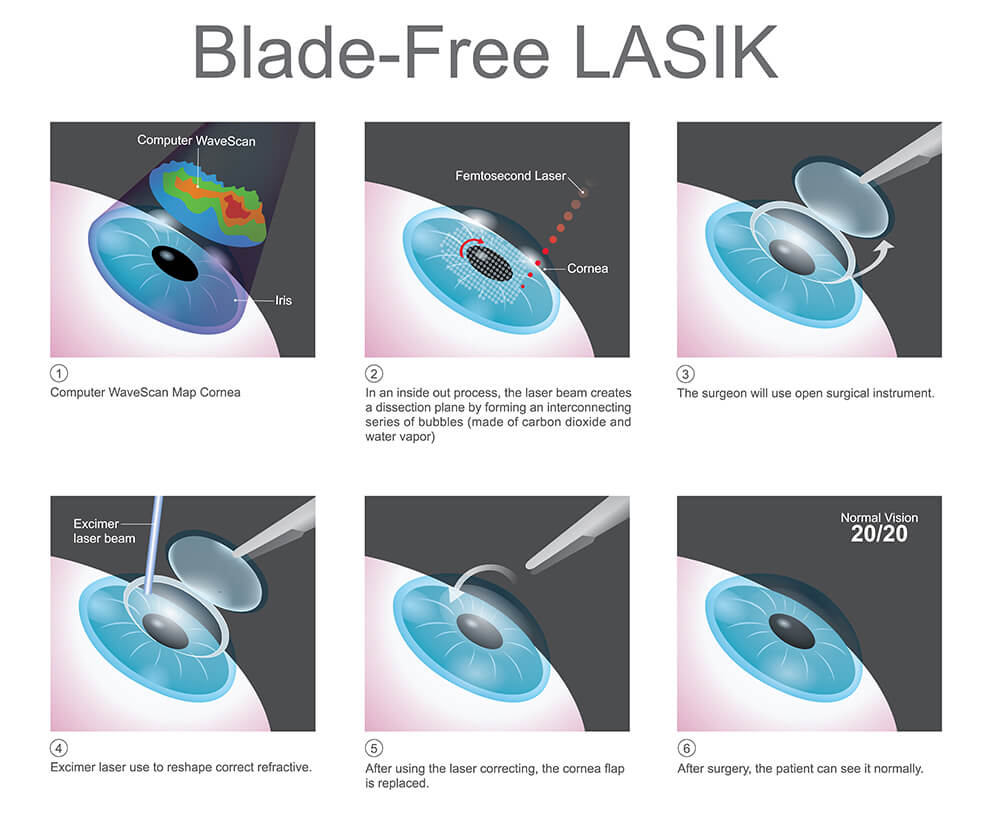What is LASIK surgery?

LASIK stands for laser-assisted in situ keratomileusis. “In situ keratomileusis” is medical terminology that more or less translates to “sculpting the cornea.” Reshaping the cornea with laser technology results in the correction of refractive errors such as nearsightedness, farsightedness, and astigmatism.
How does LASIK work?
During LASIK, an advanced laser is used to sculpt the cornea into a shape that corrects for the refractive error. The cornea can then refract light properly, thus eliminating the need for glasses or contacts.
The cornea is the front part of the eye where light enters and bends (refracts) to the back of the eye, where visual signals are sent to the brain. If the cornea is slightly elongated or short, light refracts in such a way that it does it not reach the back of the eye. This results in a refractive error such as nearsightedness, farsightedness, or astigmatism, which cause blurry vision at varying distances.
LASIK in Honolulu and Kahului
LASIK surgery is essentially painless and extremely fast — it only takes 15-20 minutes to perform the entire procedure. Before surgery, your surgeon will administer numbing eye drops to prevent any pain. A femtosecond laser is then used to make a micro-thin flap on the surface of the cornea. This flap is later used as a natural bandage to promote fast and comfortable recovery.
After the flap is created, it is lifted to expose the underlying corneal tissue. Your surgeon will then use an excimer laser to reshape the cornea in accordance with your prescription. While many patients feel a slight pressure when the flap is created, most don’t feel any sensation at all during the reshaping process.
Once the cornea is reshaped, the surgeon replaces the flap. It doesn’t need to be stitched into place as it naturally fuses back to the cornea over time.

What are the side effects of LASIK surgery?
The most common side effects of LASIK only last a couple of days.
These effects include:
- Soreness
- Itchiness
- Inflammation
- Dry Eye
These effects usually appear right after surgery once the numbing eye drops wear off. They can be mitigated by using prescribed eye drops after surgery. Your surgeon may also recommend using artificial tears and mild over-the-counter painkillers.
For the most part, the discomfort following LASIK only lasts a couple days. If they last longer than that, it may be an indication of a complication, so you should contact your surgeon if you experience prolonged discomfort.
What are the risks of LASIK surgery?
Dry eyes after LASIK can be quite common, but the condition is easily treatable with artificial tears or prescription medication. Poor night vision and light sensitivity are also common after LASIK, but most often go away within several weeks. Serious complications are extremely rare — according to the American Refractive Surgery Council, less than 1% of patients experience severe complications as a result of LASIK surgery.
Will I have perfect vision after LASIK?

There’s no way to guarantee that every patient who has LASIK achieves 20/20 vision. The vast majority of patients, however, do achieve 20/20 vision or better after LASIK. You can even maximize your chances of achieving perfect vision by opting for a custom LASIK procedure.
Custom LASIK uses 3D imaging to measure your prescription within .01 diopters, which makes the surgery much more precise. Patients who have custom LASIK almost always end up with at least 20/20 vision.
It’s important to recognize the limitations of surgery before deciding to undergo LASIK — perfect vision is never a guarantee. It can also take time to see the full results of laser vision correction. While most patients see an improvement to their vision immediately after surgery, your best vision will take a couple months of healing to achieve.
Am I a candidate for LASIK?
Most people qualify for LASIK surgery.
There are, however, a few requirements for being a good candidate for LASIK:
- You must be in good health
- You must be at least 21 years old
- You must hold a stable prescription for at least a year (although some surgeons prefer two years)
- Your prescription cannot exceed -11.00 diopters of nearsightedness, +5.00 diopters of farsightedness, and 5.00 diopters of astigmatism
- You must have a sufficiently thick cornea for the safe removal of tissue
If you do not meet the general requirements for LASIK, alternative procedures are available to reduce or eliminate your dependence on glasses and contacts. Your doctor will discuss your options for vision correction based on your overall health, medical history, lifestyle, and unique prescription.



Whether it's macular degeneration or cataracts or a simple eye exam, you can find the most advanced care at our offices across the islands. Mahalo, David, for taking the time to tell about your experience with Dr. Miller and our Kona team while they took care of your macular degeneration. We take care of our patients like they are 'ohana.
🌺#ohana #MacularDegeneration #hawaii #bigisland #Eyecare ... See MoreSee Less
0 CommentsComment on Facebook
Each year, approximately 100,000 people suffer sports-related eye injuries, with around 13,500 leading to permanent vision loss. Most sports-related eye injuries can be prevented by wearing the right protective gear. Visit our optical in Kona and Lihue to get outfitted with the right eyewear for your active lifestyle.
#SportsEyeSafety #ProtectiveEyewear #sportsprotection ... See MoreSee Less
0 CommentsComment on Facebook
Your vision plays a vital role in your quality of life, and routine eye exams can help detect early signs of systemic conditions like diabetes, hypertension, and more.
✅ Schedule your annual eye exam
✅ Protect your eyes from UV rays
✅ Eat a nutrient-rich diet for healthy vision
Let’s keep our eyes—and our bodies—healthy together. 💙
#WorldHealthDay #EyeHealthMatters #VisionCare #Ophthalmology #HealthyEyesHealthyYou ... See MoreSee Less
0 CommentsComment on Facebook
Don't live with cloudy vision due to cataracts. We offer advanced Laser Cataract Surgery at the Ali’i Surgery Center on Oahu. Call us today to schedule your cataract exam and discover if now is the time for your cataract surgery. ... See MoreSee Less
0 CommentsComment on Facebook
We are so blessed with amazing optometrists who care deeply for our 'ohana. Mahalo Dr. Kashiwa, Dr. Ho and Dr. Bryant for taking such great care of our community. Happy World Optometry Day. ... See MoreSee Less
0 CommentsComment on Facebook
"Cez” has been working in the field of ophthalmology for over 18 years and has been with us for 12. She even volunteers her services to provide free eye care in the Philippines as part of the Bayanihan Without Walls Program. She serves multi-functionally as the clinic manager for all BEI locations and as a lead surgery coordinator/technician. A fluent native speaker of Ilocano and Tagalog, Cez is very passionate and tremendously happy and dedicated to providing quality eye care to every patient who comes her way. Drop a ❤️ or a comment below to thank her for all her hard work! ... See MoreSee Less
0 CommentsComment on Facebook